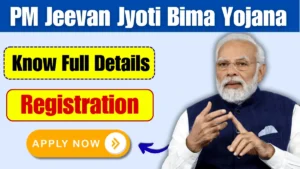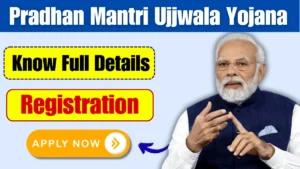In a nation as vast and diverse as India, ensuring the well-being of all its citizens, especially during critical life stages like motherhood, is paramount. Enter the Pradhan Mantri Matru Vandana Yojana (PMMVY), a scheme designed with a heartfelt mission to support expecting mothers from low-income families. This initiative not only provides financial aid but also strives to promote healthier pregnancies and childbirth experiences.
Join us as we explore the essence of PMMVY, unravel its benefits, and discuss its significance in uplifting the underprivileged segments of society. Whether you’re a healthcare professional, government official, or belong to a low-income family, understanding the nuances of this scheme could lead to impactful change.
Understanding the Core of Pradhan Mantri Matru Vandana Yojana
Pradhan Mantri Matru Vandana Yojana, launched by the Government of India, is a maternity benefit program aimed at supporting pregnant women and lactating mothers. The scheme’s primary objective is to compensate for wage loss during pregnancy, thereby enabling mothers to rest adequately and focus on their health without the stress of financial constraints.
This initiative stems from the government’s commitment to improving maternal and neonatal health outcomes. By offering financial assistance, PMMVY ensures that nutrition and healthcare needs are met, contributing to a healthier start for both mothers and their newborns. In this section, we’ll take a closer look at how PMMVY works and its significance in bridging socio-economic gaps.
Understanding PMMVY’s core values is crucial for those involved in healthcare and social welfare, as it highlights the importance of supporting vulnerable communities. By providing an overview of the scheme, we aim to foster awareness and encourage active participation from all stakeholders.
Navigating the Eligibility Criteria and Registration Process
Eligibility for PMMVY is primarily aimed at first-time mothers from low-income families. To qualify, applicants must be pregnant or lactating, and they should not have previously availed similar benefits under any other scheme. Additionally, the scheme is available to women above 19 years of age, ensuring that adolescent pregnancies are not inadvertently encouraged.
The registration process for PMMVY is streamlined to ensure accessibility for all eligible women. Applicants can register at their nearest Anganwadi center or healthcare facility, where trained professionals are available to assist with the process. Documentation required includes proof of identity, pregnancy confirmation, and bank account details.
Understanding the eligibility criteria and registration process is essential for healthcare professionals and government officials involved in the implementation of PMMVY. By ensuring that the right beneficiaries are reached, the scheme can maximize its impact and support those who need it most.
Unpacking the Benefits and Financial Assistance of PMMVY
PMMVY offers financial assistance of up to ₹5,000 to eligible beneficiaries, disbursed in three installments. The first installment is provided upon early registration of pregnancy, the second upon completion of at least one antenatal check-up, and the third after childbirth registration and the first cycle of immunization for the child.
This financial aid is crucial in covering expenses related to nutrition, healthcare, and other needs during pregnancy and lactation. Additionally, by incentivizing timely healthcare interventions, PMMVY encourages mothers to seek medical support and follow recommended health practices.
The benefits of PMMVY extend beyond financial aid, as it plays a vital role in promoting maternal and neonatal health. By understanding these benefits, beneficiaries can make informed decisions and prioritize their health and well-being.
Impactful Success Stories from PMMVY Beneficiaries
Across India, countless women have benefited from the Pradhan Mantri Matru Vandana Yojana, with success stories highlighting the scheme’s positive impact. In rural areas, where access to healthcare and financial resources is limited, PMMVY has empowered women to seek timely medical attention and maintain a balanced diet during pregnancy.
Beneficiaries have reported improved health outcomes for both mothers and infants, with reduced instances of malnutrition and low birth weight. The financial aid provided by PMMVY has also enabled women to purchase essential items for their newborns, creating a supportive environment for early childhood development.
Sharing these success stories is vital in showcasing the tangible benefits of PMMVY. By highlighting real-life experiences, we hope to inspire more women to participate in the scheme and encourage continued support from government and healthcare professionals.
Navigating Challenges and Charting Improvements for PMMVY
Despite its successes, PMMVY faces several challenges that hinder its full potential. Limited awareness and accessibility, particularly in remote areas, can prevent eligible beneficiaries from availing of the scheme. Additionally, delays in the disbursement of funds and bureaucratic hurdles can create barriers for those in need.
To address these challenges, there is a need for increased outreach and education efforts to raise awareness about PMMVY. Simplifying the registration process and ensuring timely fund transfers can also enhance the scheme’s effectiveness and reach.
By acknowledging these challenges and exploring possible improvements, stakeholders can work collaboratively to strengthen PMMVY and ensure that its benefits are accessible to all eligible women.
The Integral Role of Healthcare Professionals and Government Officials
Healthcare professionals and government officials play a pivotal role in the successful implementation of PMMVY. Their involvement is crucial in identifying eligible beneficiaries, facilitating the registration process, and providing essential healthcare services to pregnant women and lactating mothers.
Training and capacity-building initiatives for healthcare workers can enhance their ability to support PMMVY beneficiaries. Government officials, on the other hand, can focus on streamlining administrative processes and ensuring the timely disbursement of funds.
Understanding the responsibilities and contributions of these stakeholders is essential in driving the success of PMMVY. By fostering collaboration and communication between healthcare professionals and government officials, the scheme can achieve its objectives and improve maternal and neonatal health outcomes.
A Hopeful Future for PMMVY and the Importance of Social Welfare
Looking ahead, the Pradhan Mantri Matru Vandana Yojana holds great promise in transforming maternal healthcare in India. By continuing to refine and expand the scheme, it can reach even more women and make a lasting impact on maternal and neonatal health.
Social welfare programs like PMMVY are integral to addressing socio-economic disparities and promoting equitable access to healthcare. For healthcare professionals, government officials, and low-income families, understanding and supporting these initiatives is key to building a healthier and more inclusive society.
In conclusion, PMMVY represents a crucial step towards improving maternal healthcare and empowering women across India. By engaging with the scheme and advocating for its continued success, we can collectively work towards a brighter future for mothers and their children.








